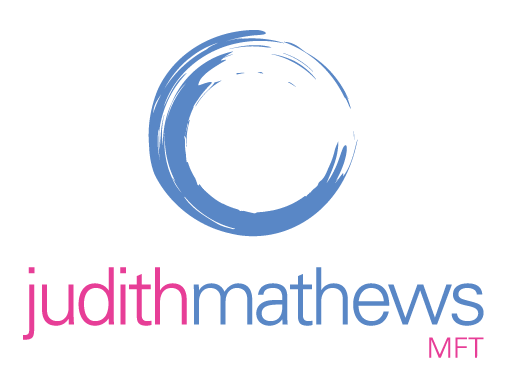
As the holiday season ends and the new year begins, media messages about weight loss seem to be everywhere. I’m struck by the shaming tone these often take. Rich foods are framed as “guilty pleasures” or “temptations”—as if enjoyment is a sin. Gaining a few pounds becomes an occasion for self recrimination. And everywhere we are surrounded by numbers: calories/fats/carbs consumed, inches and pounds gained or lost, BMI (body mass index) figures to let you know if your weight (and your character?) are in the “normal” range.
When we are taught to label foods as good or bad, it isn’t much of a leap to think of ourselves as good or bad, depending on what we choose to eat. When we are taught to look to external constructs such as numbers to gauge whether we are eating a “clean” or “healthy” diet, or whether our bodies are acceptable, we may lose our ability to tune inward for signals of hunger, fullness and other information to guide us in our choices. Is it any wonder that for many of us, our relationship with food has become disordered and utterly disconnected from any intuitive, internal sense about what our bodies actually need?
Intuitive Eating
When my clients make an appointment to talk about food anxiety or negative body image, I turn the conversation to intuitive eating. This approach, popularized by nutrition therapists Elyse Resch and Evelyn Tribole in their 1995 book by the same name, is actually a program for getting back to what once came naturally to human beings: eating when we are hungry, enjoying the taste of our food, and stopping when we are full.
In a culture dominated by external regulation, eating intuitively is not an easy task. It requires us to let go of our attachment to numbers—eating a certain number of calories or achieving a certain weight or clothing size,—in favor of honing our awareness about what our bodes are telling us. It might also mean letting go of what the experts say we should or shouldn’t eat, in favor of attending to physical and emotional signals from within.
Learning to Tune In
It all starts with asking yourself some basic questions:
- Am I hungry?
- How hungry am I?
- How do I know I’m hungry? Perhaps from the growling or emptiness in my stomach, or a sense of lightheadedness, or a feeling of fatigue or irritability?
- If I feel like eating but don’t sense my body’s hunger signals, what else might I need?
Perhaps I am feeling bored, or tired, or cold, or lonely. This is the time to tune in more closely, and see what you can learn about your needs. How could you meet these needs directly? By finding something to do, taking a nap or a walk, putting on a cozy sweater, or calling a friend?
Fudge is Just Fudge
If you determine you are actually hungry, then your task is simple (if not easy): eat whatever you feel like eating. Often my clients protest, telling me that if they just eat what they want, they’ll lose control, eat everything in sight, and their weight will shoot up. The fear makes sense; after a lifetime of swinging between dieting and overeating, many of my clients have experienced weight fluctuations. The natural human response to dietary restriction is to overeat when food becomes available—or when we finally give ourselves permission to eat. But eating intuitively is all about dropping this restrictive mentality, so that no foods are seen as “bad” or “temptations” or even “unhealthy”—labels that are sure to give these foods unnatural power and make us feel like guilty little kids when we eat them.
In the world of intuitive eating, ice cream is just ice cream, fudge is just fudge — no more or less compelling than a salad or a piece of fruit. Here’s how it works for me:
If I know I can have fudge whenever I want it, then any emotional charge around fudge evaporates. I eat it when I feel like it, and I stop when I’ve had enough. How do I know I’ve had enough? I pay attention to my body’s signals. As with any calorically dense food, my body tells me pretty quickly when I’ve had enough; a sense of fullness in my stomach or perhaps even a feeling of heat in my face are my body’s way of telling me “I am satisfied with that lovely bit of fudge we just ate.” If I’m paying attention to my internal cues, I find I really don’t want more than a piece or two, not because I “shouldn’t,” but because it feels better to stop than to continue eating.
Similarly, I have learned, over time, to determine if my body is asking for proteins or fats, grains or fruits or vegetables—all of which I eat without restriction, according to what my body asks for. I pay attention to my body’s fullness cues, and then I stop. Sometime I eat until my plate is empty, and sometimes I eat only half what I’ve portioned for myself. Regardless, I stop when I am full. When I stay conscious with food, and engage in a reasonable amount of pleasurable movement, my body stays in balance, ebbing and flowing along a normal weight range. My clients who practice intuitive eating report a similar process.
Embrace the Process
Learning to trust our bodies is a process. It takes time to re-acquaint ourselves with our bodies after a lifetime of tuning out our hunger and fullness signals. For many who are just embarking on the journey, there may be a temporary period of overeating and even some weight gain—again, the normal boomerang effect that follows restricting.
In her book Breaking Free from Emotional Eating, author Geneen Roth writes of renouncing her yo-yo dieting pattern and allowing herself to eat whatever she wanted, “believing that eventually, my body’s natural wisdom would surface.” In her case, it was chocolate chip cookies, which she ate morning, noon and night for two weeks. At some point, she had enough. She began to crave vegetables. She continued her experiment, eating all the foods she had always restricted (pizza, hot dogs, ice cream), and noticing over time that her body did indeed ask for other things: eggs, vegetables, fruits, grains—the entire spectrum of foods. And what happened with her weight? “The chocolate chip cookie stint took place in November. By May I had gained fifteen pounds. From May through September, my weight stabilized. In October, still eating what I wanted, I began to lose weight, and over the next two years, I lost thirty pounds. Depending on the time of year, my weight now fluctuates about twelve pounds.”
It’s key during this stage of the process to let go of your attachment to a certain weight. I recommend that my clients ditch their scales; numbers will only block your developing connection with your body. I haven’t weighed myself in years, and when I’m at the doctor’s office, I asked to be weighed blindly. I have learned to recognize when I’m in balance by how I feel, not by a number on a digital readout. Remember, we are not blocks of wood; we are made (mostly) from water, which by its nature ebbs and flows.
My clients who stick with the practice of intuitive eating may go through a phase of overeating, then find themselves making increasingly reasonable food choices based on what their bodies actually need. They find their weight stabilizing into a natural, appropriate range. They find their relationship with food becoming more relaxed. They enjoy a greater trust in their bodies. They may even gain a few pounds enjoying rich food around the holidays, but they can observe this without judgment, and trust their bodies to come back to balance in the new year.
To Learn More:
Intuitive Eating by Elyse Resch M.S., R.D. and Evelyn Tribole M.S., R.D.
Fed Up! : The Breakthrough Ten-Step, No-Diet Fitness Plan by Wendy Oliver-Pyatt M.D.
Eat What You Love, Love What You Eat by Michelle May, M.D.
Breaking Free From Emotional Eating by Geneen Roth

